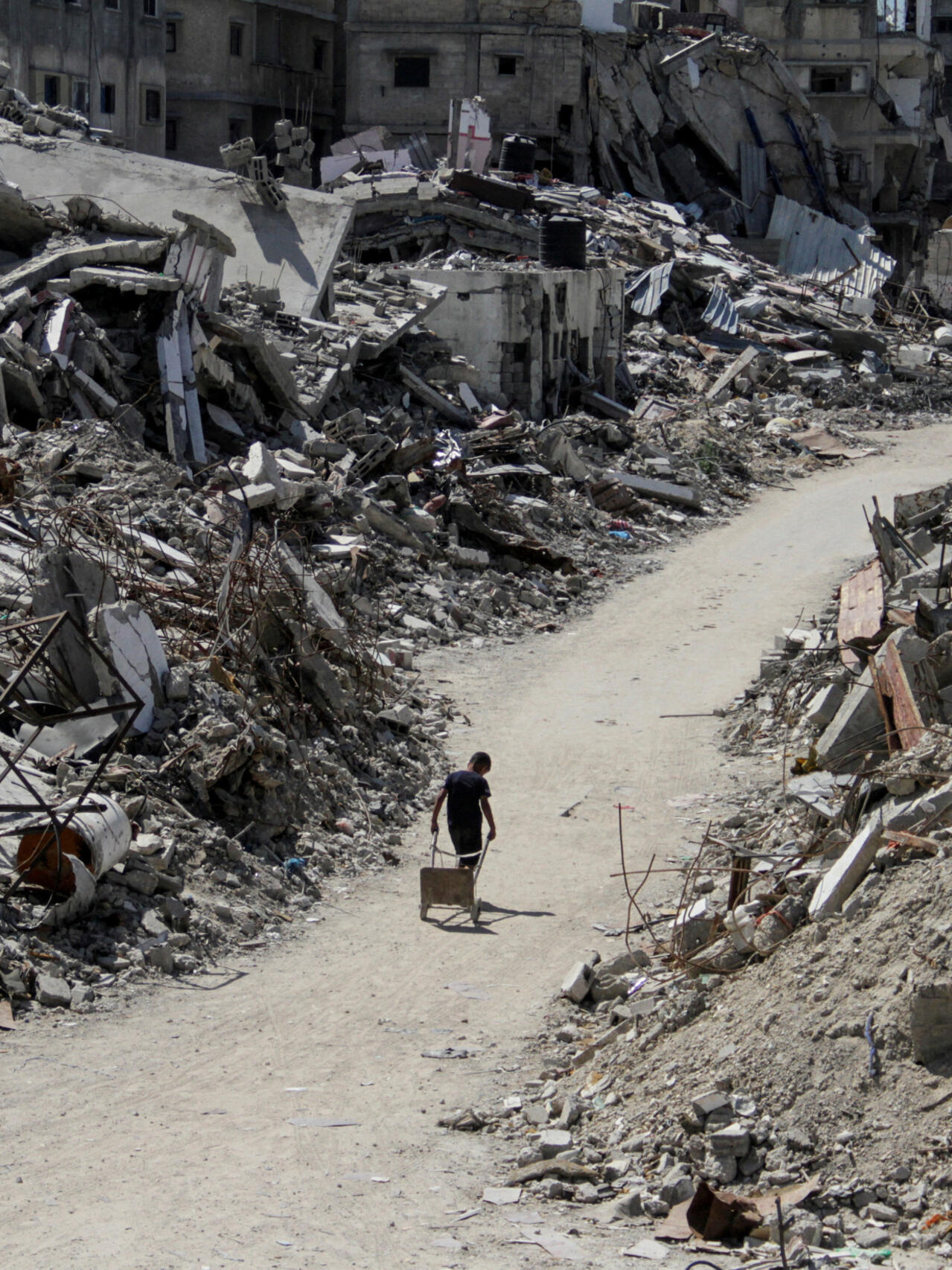
Hog Farm Air Pollution Linked to Higher Cancer Rates
Sampson County is an agricultural powerhouse for North Carolina, home to more than 400 industrial animal agriculture operations, otherwise known as factory farms. These hundreds of factory farms are responsible for spewing tons of greenhouse gases and other toxic pollutants into the air, but until now, Sampson county residents haven’t been able to do much about it.
Ninety-five percent of North Carolina hog farms are located in the eastern part of the state, a region predominantly low-income and Black, brown and Indigenous. A 2023 analysis of air quality in Duplin county (neighbor to Sampson county) found that marginalized communities are exposed to higher pollution levels — including ammonia — than the state’s residents as a whole. Efforts to fight back against pollution have long proved challenging, but residents are turning to air quality monitors to expose factory farming and a clear pattern of environmental racism.
Even though research has shown that the pork industry’s heavy presence contributes to air pollution, until recently communities in the eastern part of North Carolina have not had access to federal air quality monitors, which would give them access to federal grants that could be used to make the air cleaner. A new program spearheaded by residents and a coalition of advocacy groups is working to address that gap in information — putting monitoring equipment in the hands of the community in order to arm them in the fight for cleaner air.
In Sampson County, Community Residents Take the Lead
Factory farms have a long history of operating in poorer marginalized communities where residents lack the financial resources to push back against the meat and dairy industries. Every single attendee at Cleanaire NC’s first community meeting for the project was Black or brown, says Daisha Wall, who manages programs for Cleanaire NC, one of the organizations working in Sampson County to install air quality monitors throughout the area in order to fill the void. The organization employs what is sometimes called “citizen science,” a strategy of scientific research that is driven by a collaboration of professional scientists and members of the public, though the group uses the term “community science” to describe its collaborative efforts. Community scientists are called Airkeepers by the Cleanaire NC, which previously spearheaded a similar effort in Charlotte.
The Sampson County initiative brings together community residents and a number of environmental groups, including Cleanaire NC, the Environmental Justice Community Action Network and Eastern Research Group. The groups will be working together to deploy air sensors — some directly into backyards and one that is mounted on a car — in order to detect pollution in the air. The project is being funded by a $500,000 grant from the EPA, and depending on the data, agency regulators could take action if that pollution exceeds regulatory limits.
Building On Success in Charlotte
In Sampson County, the campaign for a federal air monitor has just started. But 170 miles away in Charlotte, residents of the historic West End neighborhood have already leveraged the sensors to jumpstart federal air quality monitoring.
The community in Charlotte even went on to create a green district with the support of organizations like Cleanaire NC, which includes car charging stations, a community garden, freshly planted trees, newly established green spaces and green bus stations and infrastructure.
The new landscape is a distinct departure from the historic reality of the West End neighborhood, which was redlined by zoning maps in the 1930’s. The practice of redlining was used to delineate Black neighborhoods as “risky investments.” These neighborhoods then were excluded from the investments enjoyed by other areas in cities, and buildings, roads and other city services became neglected and rundown as a result. To make matters worse, when highways came to Charlotte, they cut through other Black neighborhoods, which caused more families to move to the West End and increased racial segregation in Charlotte. Decades later, the neighborhood is now considered highly desirable, but the district also struggles against the effects of gentrification, which increase rents and property taxes and threaten to displace longtime residents.
Back in Sampson County, Wall emphasizes that Cleanaire NC is well aware of their role as an outside organization supporting the work of the residents of the local community. “We really are led and guided by community needs and input,” she says. Wall also says she’s eager to get started, to help spur “the changes that communities want to see.”
SDGs, Targets, and Indicators
-
SDG 3: Good Health and Well-being
- Target 3.9: By 2030, substantially reduce the number of deaths and illnesses from hazardous chemicals and air, water, and soil pollution and contamination.
- Indicator: Air pollution levels and exposure to hazardous chemicals in affected communities.
-
SDG 11: Sustainable Cities and Communities
- Target 11.6: By 2030, reduce the adverse per capita environmental impact of cities, including by paying special attention to air quality and municipal and other waste management.
- Indicator: Air quality in communities near factory farms and the presence of air quality monitors.
-
SDG 13: Climate Action
- Target 13.2: Integrate climate change measures into national policies, strategies, and planning.
- Indicator: Emissions of greenhouse gases from factory farms and their contribution to climate change.
-
SDG 15: Life on Land
- Target 15.1: By 2020, ensure the conservation, restoration, and sustainable use of terrestrial and inland freshwater ecosystems and their services.
- Indicator: Impact of factory farms on terrestrial ecosystems and water quality.
-
SDG 16: Peace, Justice, and Strong Institutions
- Target 16.7: Ensure responsive, inclusive, participatory, and representative decision-making at all levels.
- Indicator: Community participation in decision-making processes related to air quality monitoring and pollution control.
Table: SDGs, Targets, and Indicators
| SDGs | Targets | Indicators |
|---|---|---|
| SDG 3: Good Health and Well-being | Target 3.9: By 2030, substantially reduce the number of deaths and illnesses from hazardous chemicals and air, water, and soil pollution and contamination. | Air pollution levels and exposure to hazardous chemicals in affected communities. |
| SDG 11: Sustainable Cities and Communities | Target 11.6: By 2030, reduce the adverse per capita environmental impact of cities, including by paying special attention to air quality and municipal and other waste management. | Air quality in communities near factory farms and the presence of air quality monitors. |
| SDG 13: Climate Action | Target 13.2: Integrate climate change measures into national policies, strategies, and planning. | Emissions of greenhouse gases from factory farms and their contribution to climate change. |
| SDG 15: Life on Land | Target 15.1: By 2020, ensure the conservation, restoration, and sustainable use of terrestrial and inland freshwater ecosystems and their services. | Impact of factory farms on terrestrial ecosystems and water quality. |
| SDG 16: Peace, Justice, and Strong Institutions | Target 16.7: Ensure responsive, inclusive, participatory, and representative decision-making at all levels. | Community participation in decision-making processes related to air quality monitoring and pollution control. |
Analysis:
-
Which SDGs are addressed or connected to the issues highlighted in the article?
The issues highlighted in the article are connected to the following SDGs:
- SDG 3: Good Health and Well-being
- SDG 11: Sustainable Cities and Communities
- SDG 13: Climate Action
- SDG 15: Life on Land
- SDG 16: Peace, Justice, and Strong Institutions
-
What specific targets under those SDGs can be identified based on the article’s content?
The specific targets identified based on the article’s content are:
- Target 3.9: By 2030, substantially reduce the number of deaths and illnesses from hazardous chemicals and air, water, and soil pollution and contamination.
- Target 11.6: By 2030, reduce the adverse per capita environmental impact of cities, including by paying special attention to air quality and municipal and other waste management.
- Target 13.2: Integrate climate change measures into national policies, strategies, and planning.
- Target 15.1: By 2020, ensure the conservation, restoration, and sustainable use of terrestrial and inland freshwater ecosystems and their services.
- Target 16.7: Ensure responsive, inclusive, participatory, and representative decision-making at all levels.
-
Are there any indicators mentioned or implied in the article that can be used to measure progress towards the identified targets?
Yes, there are indicators mentioned or implied in the article that can be used to measure progress towards the identified targets. These indicators include:
- Air pollution levels and exposure to hazardous chemicals in affected communities.
- Air quality in communities near factory farms and the presence of air quality monitors.
- Emissions of greenhouse gases from factory farms and their contribution to climate change.
- Impact of factory farms on terrestrial ecosystems and water quality.
- Community participation in decision-making processes related to air quality monitoring and pollution control.
Behold! This splendid article springs forth from the wellspring of knowledge, shaped by a wondrous proprietary AI technology that delved into a vast ocean of data, illuminating the path towards the Sustainable Development Goals. Remember that all rights are reserved by SDG Investors LLC, empowering us to champion progress together.
Source: sentientmedia.org

Join us, as fellow seekers of change, on a transformative journey at https://sdgtalks.ai/welcome, where you can become a member and actively contribute to shaping a brighter future.






